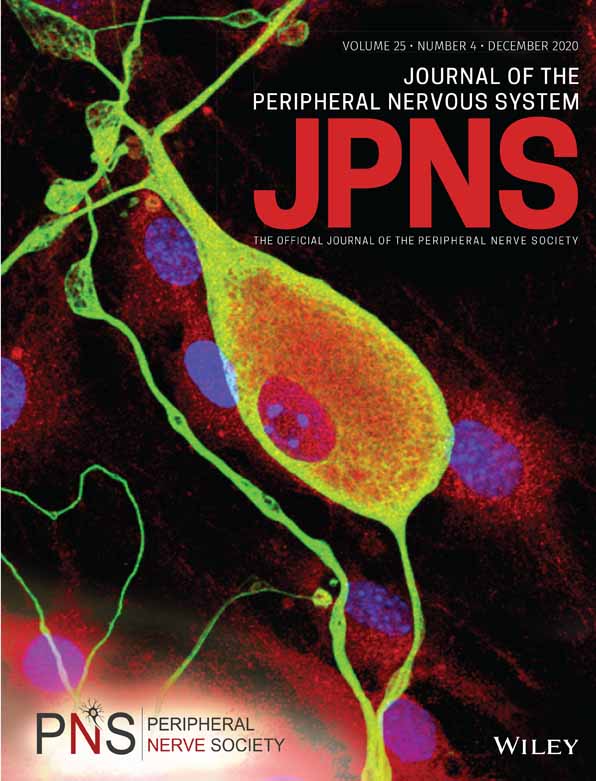Convergent pathological and ultrasound features in hereditary syndromic and non-syndromic minifascicular neuropathy related to DHH
Abstract
Minifascicular neuropathy (MN) is a rare, autosomal recessive disease with prominent structural changes of peripheral nerves. So far, it has been observed in females with a 46,XY karyotype and mutations of the Desert Hedgehog (DHH) gene, thus linking MN to gonadal dysgenesis (GD) and disorders of sex development (DSD). However, a 46,XX proband with normal female sex and gender development underwent clinical evaluations, nerve conduction studies and genetic screening for a severe motor-sensory neuropathy with a pathological phenotype that hinted at MN. Indeed, sural nerve biopsy revealed a profound disturbance of perineurium development with a thin and loose structure. High-resolution ultrasound (HRUS) also disclosed diffuse changes of nerve echotexture that visibly correlated with the pathological features. After extensive genetic testing, a novel homozygous DHH null mutation (p.Ser185*) was identified in the proband and in her sister, who was affected by a similar motor-sensory neuropathy, but was eventually found to be a 46,XY patient according to a late diagnosis of DSD with complete GD. DHH should therefore be considered as a possible cause of rare non-syndromic hereditary motor-sensory neuropathies, regardless of DSD. Furthermore, HRUS could effectively smooth the complex diagnostic workup as it demonstrated a high predictive power to detect MN, providing the same detailed correlations to the pathologic features of the nerve biopsy and Dhh−/− mice in both sisters. Hence, HRUS may assume a pivotal role in guiding molecular analysis in individuals with or without DSD.
CONFLICT OF INTEREST
The authors declare no potential conflict of interest.




